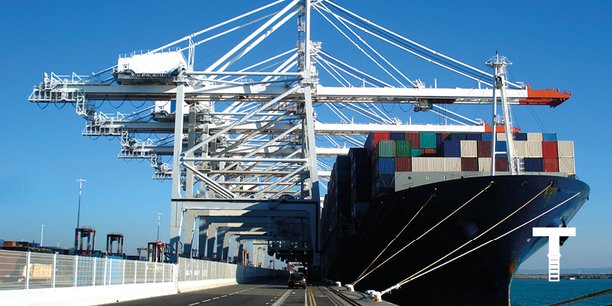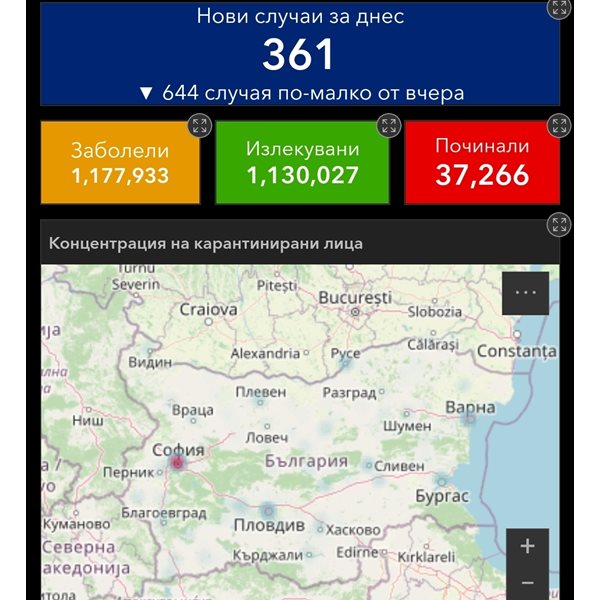France has the world’s second largest coastline and 3,427 km of coastline in mainland France. However, its seven Major Maritime Ports (GPM)[1] are left behind in terms of tonnage and attractiveness by those of the northern European row (Antwerp-Zeebrugge, united since March 28, Rotterdam, Hamburg, Bremen). In 2020, according to the DynaLiners report, Rotterdam held first place in Europe for container traffic with 14.5 million TEUs (twenty-foot equivalent units), followed by Antwerp (12 M) and Hamburg (8.5 M) . Le Havre was only ninth with 2.35 million. In the south, Marseille-Fos does not even appear in the top 10, preceded by Piraeus, Valencia, Barcelona and Genoa. However, ports are a crucial instrument for our economy. The total added value associated with the operation of the French port system would exceed, according to a Senate report, 15 billion euros, and port activity would represent approximately 350,000 direct and indirect jobs, including 180,000 direct jobs. The causes of this poor performance of hex ports are multiple and complex. The 2008 reform which established the Grands Ports Maritimes had three main components: the sale of port terminal tools to private operators, the transfer of port employees (crane operators and crane operators) to these handling companies and the modification of the governance of the port with management board and supervisory board. Certain advances but which have not eliminated all the problematic elements in the operation of French ports according to Jean Debrie, university professor in planning and urban planning at the University of Paris 1 Panthéon-Sorbonne, who lists them in his article “The evolution of French ports: what future? »[2] : the difficult relationship between the levels of public action and the need for more entrepreneurial governance, the weakness of intermodal connections (river and rail) in the hinterland, the question of social dialogue and the need for more commercial approach in the management of French ports.
Senators are sounding the alarm
Weaknesses more or less identical to those noted by the Senate report of July 2020 “Re-arming our ports in international competition”. The conclusion of the senators is without appeal: “French ports (still) suffer from a lack of competitiveness and an absence of a long-term strategic vision from the State, which prevent France from taking full advantage of world trade. » One figure sums up the problem well: 40% of containers to or from France pass through foreign ports. According to various estimates gathered by the senatorial mission, the delay taken by France would represent 30,000 to 70,000 jobs and 5 to 7 million m2 of logistics area lost in the container sector. Michel Vaspart, at the time Senator LR of Côtes-d’Armor, was rapporteur for this study. Two years later, he has not seen any improvement in the evolution of governance: “Our proposal to integrate two private operators into the supervisory board was not well received by the general directors of the ports, who are like bosses by divine right. In addition, the French State does not exercise sufficient control, it is a real subject. » Another pitfall: post-port unloading, ie the transport of goods in the hinterland (area of influence and economic attraction of the port) and to consumption centers by river, rail or road. “We have a real problem transferring goods, with totally congested roads, because we haven’t been able to do intermodality. This is one of the major causes of the brakes on the development of French ports, in particular that of Le Havre” believes the former senator. The recent creation of Haropa Port (the establishment that brings together the ports of Le Havre, Rouen and Paris, Editor’s note) could be an effective response according to Michel Vaspart, provided that logistics platforms are created on the Seine axis, such as on the site of the former Porcheville thermal power station in the Yvelines. “Otherwise, the opening in ten years of the Seine-Nord Europe canal[3] will benefit Antwerp” warns the former senator. Jean-Pierre Chalus, president of the Union des Ports de France (UPF), the professional association representing port operators, does not share the severity of the finding: “If we want to compare the ports of the North to ours, we must not evacuate the quality of their service by inland waterways, a larger rail network and a higher population density. In France, we have large maritime facades much less concentrated in port matters. »
Put back industry near ports
Without forgetting the European logic of rail freight corridors which promotes these entry points for goods in Europe. “If you want to load a train between the port of Antwerp and Lyon, it will have priority over a train that goes to Le Havre Lyon” explains Jean-Pierre Chalus. The Covid-19 pandemic has highlighted the congestion of northern ports, with very long unloading times, which has benefited French ports. Before the health crisis, flows between China and Europe were very regular, but as soon as there is a grain of sand, this stringent organization comes to a halt. “Our ports have shown their ability to adapt” rejoices the president of the UPF. Finally, industrial basins are larger and more dynamic in Germany and the Netherlands, and part of the flows are generated by these industries. Jean-Pierre Chalus takes aeronautics as an example. Airbus’ two global hubs are in Montoir-de-Bretagne and Hamburg: “When I managed the port of Nantes Saint-Nazaire (from 2010 to 2019), it had exactly the same performance as that of Hamburg. » If he recognizes the deficit in volume of our ports compared to those of the northern European row, he refutes that of a lower profitability: “GPMs balance all their accounts. But that’s not enough: you also have to look at what the port ecosystem produces, ie employment and added value. » Example: the installation of the Siemens Gamesa off-shore wind turbine factory on the site of the port of Le Havre with the key to 750 jobs. The social question has been a sensitive point in French ports for twenty years. For a long time, dockworkers from the Union Nationale des Industries de la Manutention have called strikes which may have discouraged customers. The Senate mission recorded 1,698 work stoppages (from 1 to 24 hours) between 2008 and 2018 in the 7 GPM, for reasons sometimes very far removed from their profession, such as that against pension reform. “The other European ports regularly experience strike episodes, but their image of reliability is better with shippers and shipowners” analyze the senators. An argument swept away by Jean-Pierre Chalus, for whom “There hasn’t been a major strike for ten years. Social dialogue is sustained, and we must not embellish what is happening elsewhere”. Still, the CGT Dockers is still opposed to the robotization of ports, a strong trend all over the world.
With Haropa, the reconquest has begun
The merger last year of the seaports of Le Havre, Rouen and Paris for river transport is a way of reducing the volume gap between France and its Belgian, Dutch or German competitors. In 2021, Haropa’s TEU traffic reached 3.1 million, or +28%. And for its managing director Stéphane Raison, it’s not just the tonnage that counts: “Haropa Port, the fifth European port, creates 8 billion per year of added value and represents 160,000 direct and indirect jobs. Antwerp is 17 billion euros of added value with three times our traffic. This relativizes the examination of the situation. » If the French ports are lagging behind, it is because we have not been able to bring industries close to our port sites. Antwerp, the world’s second chemical cluster, and the Seine axis each have two equivalent refineries. “The difference is that in Antwerp the first fifty chemists in the world have settled” illustrates Stéphane Raison. “That’s what we want to do: put industry back at the heart of our policies to create value for the territories” specifies the general manager of Haropa Port. The port of Rouen will welcome the sugar refiner from Dubai AKS. That is an investment of several hundred million euros and the creation of 300 direct jobs and a thousand indirect ones by 2025. “We are going to have great announcements on containers soon” adds Stéphane Raison. In this container market, which increased by +13% last year, the French ports have a card to play. About fifty million of these boxes, 2.5 meters high and 6 meters wide, are handled in the ports of the northern European row. “If there are 6 million additional containers to process each year, where do you do it? The port of Le Havre can easily double its processing capacity” recalls Stéphane Raison, for whom the GPM are in a logic of reconquest and have become attractive again given the current congestion. Haropa Port offers a continuum that extends over 300 km from Le Havre to the 70 river platforms of the Seine axis, which constitutes “a unique vision in Europe that completely changes the way of delivering goods” according to the boss of Haropa. New urban logistics and rail service projects are underway to achieve carbon-free multimodal management. The State will invest 1.45 billion euros by 2027 to make Haropa Port “a leading sea and river port system in Europe”. Will this be enough for the French ports to no longer be condemned to play in the second division? “We have reason to hope” concludes Stéphane Raison.
………………………………………………………………………………….
[1] Dunkirk, Le Havre, Rouen (united in Haropa Port since June 2021), Nantes Saint-Nazaire, La Rochelle, Bordeaux, Marseille.
[2] in Les Cahiers français: topical documentsFrench Documentation, 2016.
[3] The Seine-Nord Europe Canal will be 107 km long and will be able to accommodate ships that can hold 4,400 tonnes of goods, or the equivalent of 220 trucks.
…………………………………………………………………………………..
–


